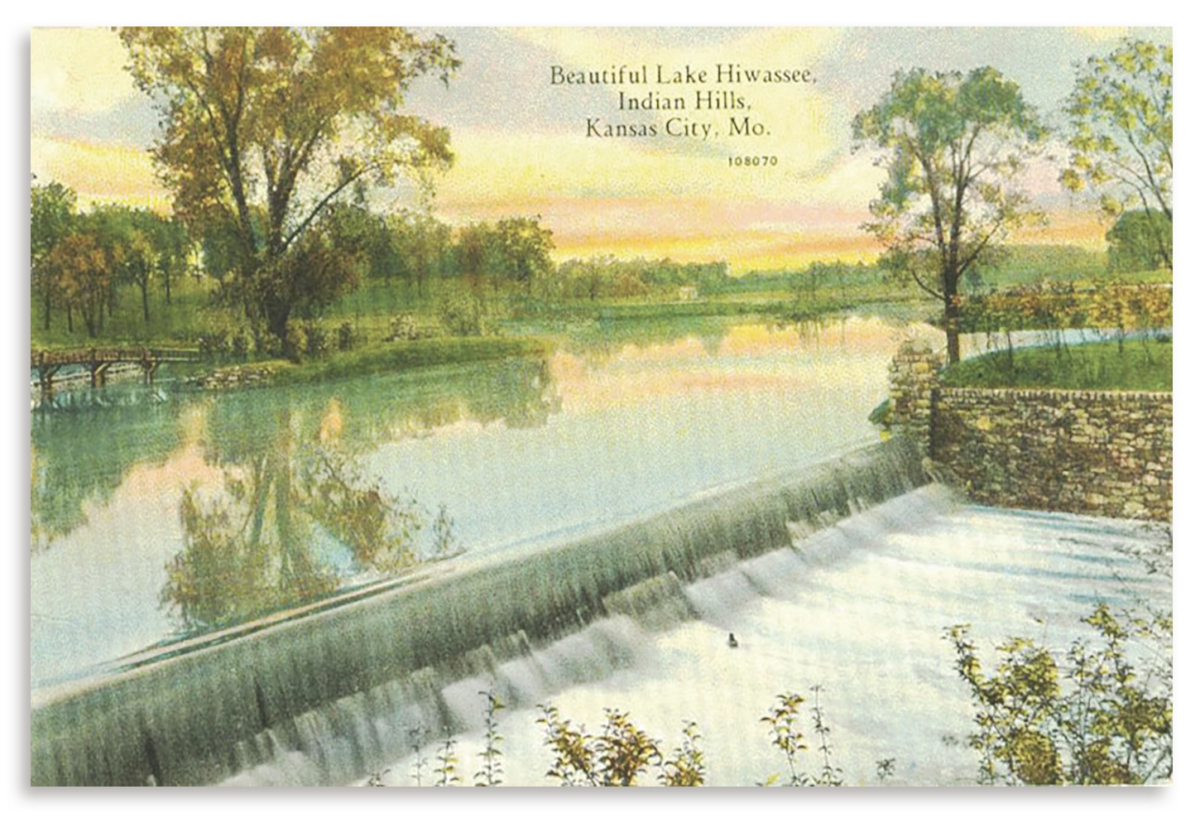
Michael Bushnell
Contributing Historian
The great Kansas City real estate developer J.C. Nichols is not known to blunder often — especially in matters of real estate. His two man-made lakes in the Country Club District lends credence to the theory that everyone makes mistakes now and then.
The description on the back of this Hall Bros. postcard, published around 1927, reads: “Beautiful Lake Hiwassee in Indian Hills, Country Club District, Kansas City Missouri.”
As part of J.C. Nichols Country Club addition — just south of the newly conceived Country Club Plaza — Nichols created two man-made lakes, Lake Hiwassee at 63rd and Indian Lane and Willow Lake at 63rd and Ensley. Lake Hiwassee, as shown on this hand-colored postcard, was his showpiece. Lake Hiwassee contained two islands with shelters built on them and were connected to each other and to surrounding land by rustic bridges. Nichols’s realty company built stone picnic ovens near the shelters to encourage family gatherings on the islands.
Lake Hiwassee was formed at the confluence of two branches of Brush Creek — normally a lazy, picturesque, spring-fed stream. After heavy rains, however, the creek rose from its banks and carried all manner of silt, mud and debris into the beautiful lake. Afterward, crews with Nichols’s real estate company would dutifully clean the mess and attempt to return the lake to its bucolic state.
As development continued, however, more runoff and silt began to fill the lake. By 1944, Nichols had had enough. Between the silt issues from runoff, and the continued vandalism of people chopping up the rustic bridges for firewood, company officials decided to quit throwing good money after bad and filled in the lake — returning the site to the confluence of two streams instead of a water attraction. No evidence of this lake exists today. WIllow Lake, roughly four blocks to the east, still exists between 63rd Street and Tomahawk Road — just to the east of Ensley Lane.
Information for this postcard was derived from the book: “J.C. Nichols and the Shaping of Kansas City: Innovation in Planned Residential Communities,” by Dr. William Worley.



















